Morocco is constituted by colourful and permeable façades. Mashrabiya is the element in charge of balancing this relationship between the outdoor and the indoor of a building, regarding the temperature and light control.
With this research I aimed at the creation of a “natural mashrabiya” through the local geological formation of salt crystals, manipulating their growth, with a potential upgrade of the light and air flows in the interiors.
My inspiration came looking at the so called Desert Roses

when I came to know about their existence and the photography series called “Badlands” from the American photographer Ben Sandler when I considered the idea to manipulate the desert roses’ growth in order to give them a prestudied shape.
“Still the desert is a land full of remnants of a previously fertile environment”. B. Sandler


Desert roses are rose-like formations of crystal clusters of gypsum or baryte which include abundant sand grains. The ‘petals’ are flattened crystals fanning open the crystal clusters. The average size of rocks is from 1,3 cm to 10 cm in diameter. The maximum height that can be reached is 43 cm but some exceptions were seen, such as in Arizona desert (1 mt).
Desert are environments shaped by aridity and dryness. Although this aridity reflects, still, the balance between precipitation and the potential evapotranspiration.
A process that is needed for the desert roses’ regular growth and is the sum of evaporation and plant transpiration from the Earth’s land surface to atmosphere. To measure the best of these conditions PET (Potential Evapotranspiration) is taken into account, based on the following criteria;
- Completely shaded ground
- Uniform height
- Adequate water status in the soil profile
It is a reflection of the energy available to evaporate water and of the wind available to transport the water vapour from the ground up into the lower atmosphere.
In order for the rose crystals to form, an arid environment, a source of calcium sulfate are required, together with a seasonal soil evaporation.
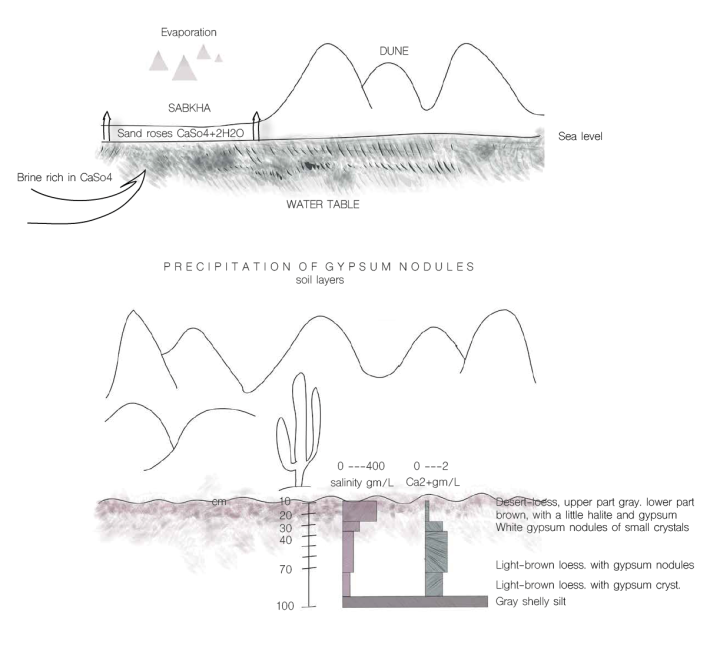
There are many polymorphical varieties of the gypsum rosette, besides uniquely having a common chemical formula (CaSO4+2H20).
Some look like a rose flower with its pedals open, while others like bladed spheres. Ofcourse it is an evaporite -> it forms during the water evaporation.
Gypsum can appear as transparent crystal; fibrous, elongated crystals (satin spar), granular and compact. These are found in flat brine-rich desert areas. As the water evaporates and deposits throughout the seasons, the gypsum crystals grow in the intergrain pores trapping the loose sand.
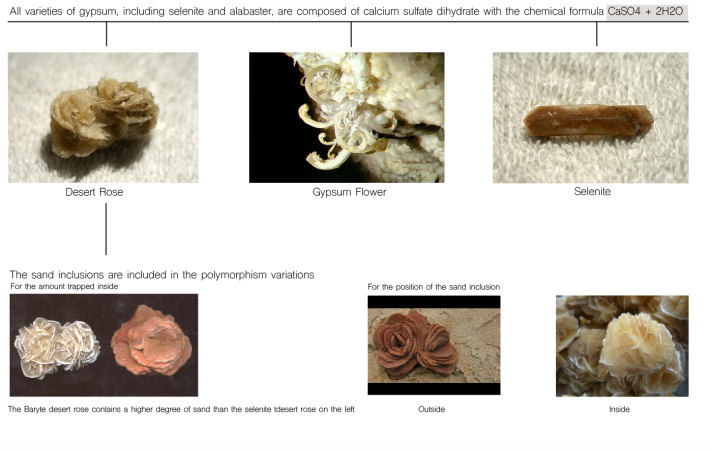
Because of the spatial heterogeneity and temporal variability in water availability in these regions, water managers responsible for planning and allocating water resources need to have a through understanding of the spatial and temporal rates of the evapotranspiration. Water management that is needed in this theorical process of crystallization to provide the sand of the 3d printers structure with the salt crystal format’s formula. A dose of information that helps to better observe evaporative depletion and to establish a link between land use, water allocation and water use in a river basin.
This remote sensing approach, called SEBAL (Surface Energy Balance Algorithm for Land) has shown great potential in estimating the evapotranspiration over large areas using limited meteorological data. The following materials are required;
- Land surface temperature
- Surface reflectance
- Vegetation index
The principal advantage of the proposed methodology is that it requires only satellite data, so it allows to estimate the ET in areas without measurement.
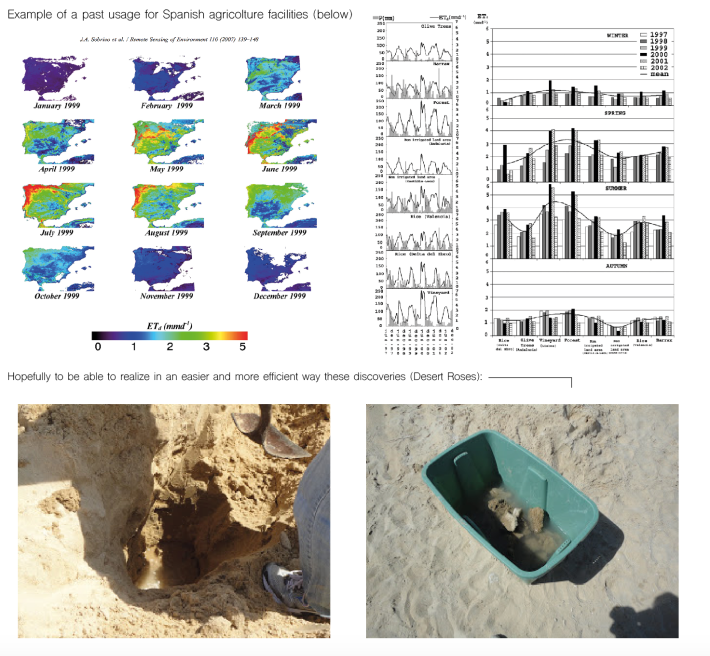
Once the most convenient areas are detected through this analysis, a basic platform as skeleton is needed for the crystal formation. This initial body, built up through the “Stone Spray” technology will lead the crystal formation to a self-organization, self-assembly and self-replication following the premised data which in this case is a mashrabiya. 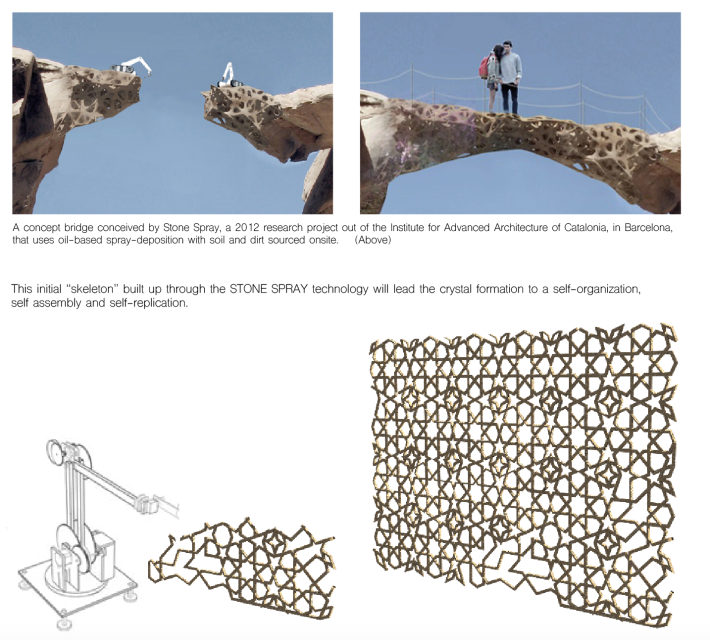
This skeleton is supposed to have some openings in order to guarantee, periodically, the necessary chemical elements (calcium or sulfates) or sand in the desired quantities.
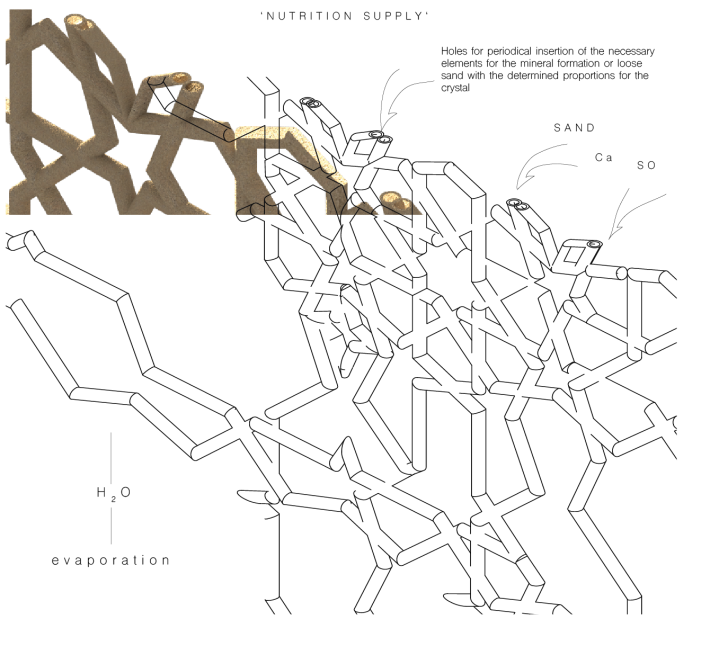
In this way the process of the crystal formation on the 3d printed structure will be similar to the one of “4d print”, in which the components respond autonomously to changing environmental conditions over time, since the gypsum rose clusters will be left to their natural formation following the input of nutritions and favorable conditions.
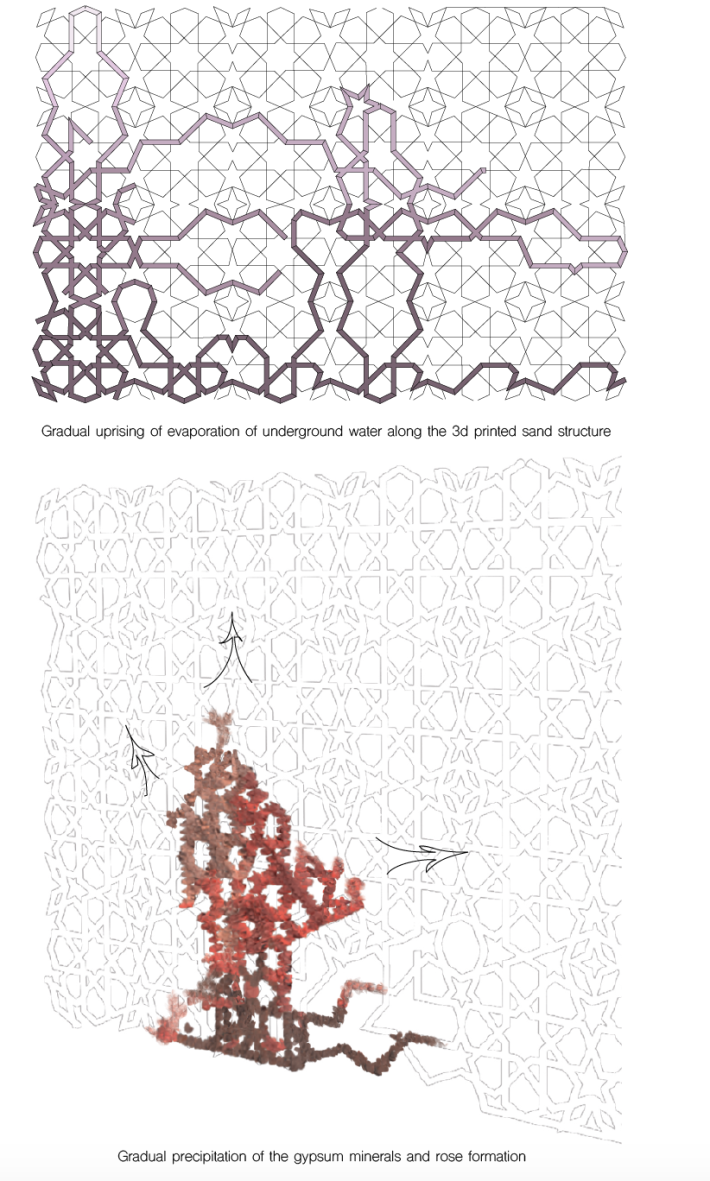
Monitoring the crystal growth it is possible to maintain advantages both of visual and thermal nature.
The transparency and the colour of the crystals depend on the amount of sand included. Its position if inside or outside (the ambient sand that is incorporated into the crystal structure, or otherwise encrusts the crystals, varies with the local environment) and from the presence of some chemical elements such as;
- copper
- sulfur and sulfides
- silver
- iron ores
- calcite
- dolomite
- opal
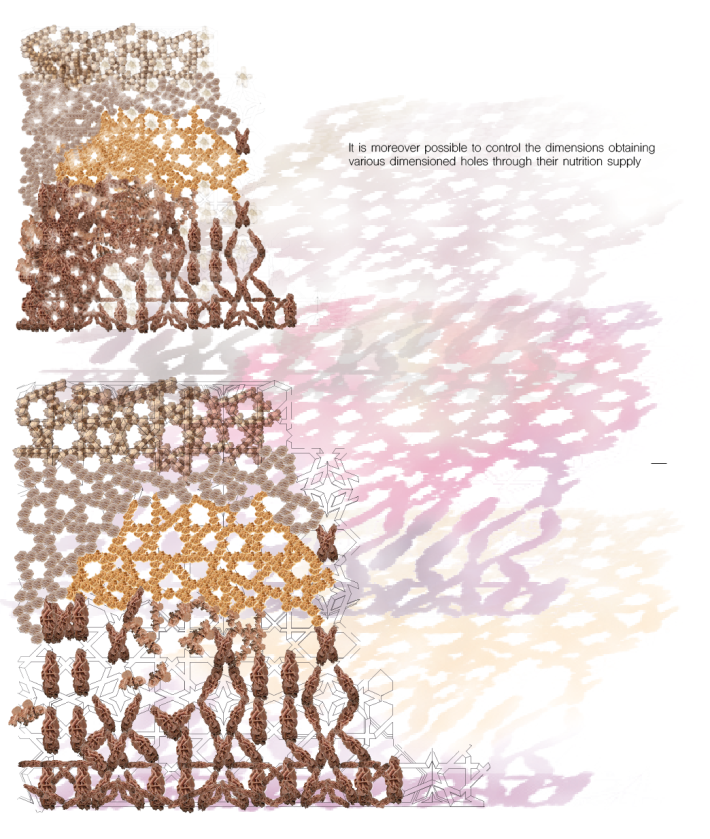 Finally the most common thermal advantages through air convection, ventilation and brise-soleil system thanks to the freedom and power to control the size and position of the holes (lowering or increasing the nutrition and enhancing the necessary conditions) as well as the position of the 3d printed structures related to each other.
Finally the most common thermal advantages through air convection, ventilation and brise-soleil system thanks to the freedom and power to control the size and position of the holes (lowering or increasing the nutrition and enhancing the necessary conditions) as well as the position of the 3d printed structures related to each other.
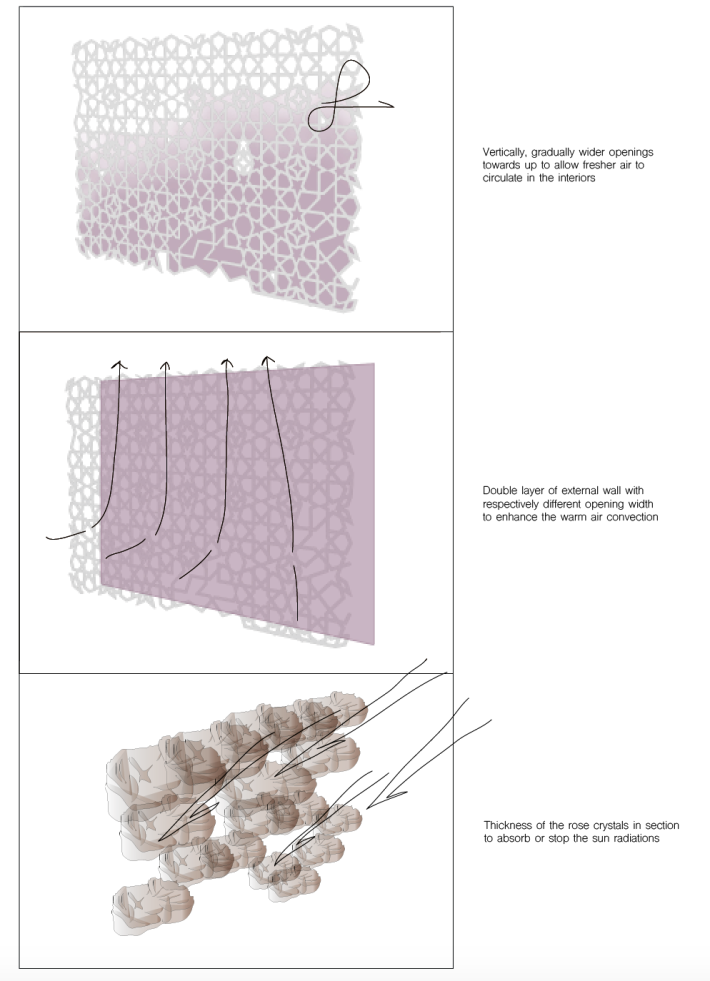
In conclusion, new technologies allow us to regenerate images based on natural processes, which we have potential to apply to architectural boundaries and this is how I arrived to immagine the design of mineral clusters which are supposed to be exclusively of natural origins.
Research-wise, interactive surfaces and environments also bring new responsive capabilities to architecture, enabling users to receive feedback regarding important information that may be difficult to detect and hopefully have a more accurate understanding of material supply chains, enabling manufacturers to improve their products’ environmental performance, considering that communications-augmented technologies also extend control over the physical environment in new ways and design to produce optimal results regarding material waste and weight.
REFERENCES:
- Gypsum rosettes -> http://legacy.earlham.edu/~greshjo/Rosette.htm
- Desert, Evapotranspiration -> biologyreference.com
- “Mapping evapotranspiration trends using MODIS and SEBAL model in a data scarce and heterogeneous landscape in Eastern Africa” by J. K. Kiptala, Y. Mohamed,M. L. Mul, P. Van der Zaag. 17 December 2013 -> onlinelibrary.wiley.com/doi/10.1002/2013WR014240/full
- Selenite -> rocksandminerals4u.com/selenite.html
- Stone Spray is a 3D Printer for Architecture -> treehugger.com